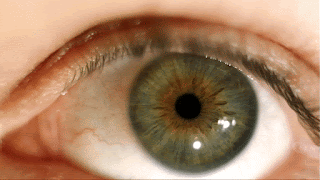How Do People Get Lyme Disease
How Do People Get Lyme Disease? Understanding the Transmission Basics
If you're worried about Lyme disease, you are definitely not alone. It's a condition that garners a lot of attention, and understanding how it spreads is the first step toward effective prevention. So, let's get straight to the critical question: How do people get Lyme disease?
The simple answer is that you get Lyme disease exclusively through the bite of an infected tick. It sounds straightforward, but there are crucial details about this process—such as which ticks are involved, where they live, and how long they need to feed—that everyone needs to know.
This article will break down the precise mechanics of Lyme disease transmission in a clear, easy-to-digest format. By the end, you'll be much better equipped to enjoy the outdoors safely.
The Culprit: Understanding the Role of Infected Ticks
Lyme disease is caused by the bacterium Borrelia burgdorferi (and sometimes Borrelia mayonii in parts of the US). This bacteria cannot survive freely in the environment; it requires a carrier, known as a vector.
In North America and Europe, the primary vector is the blacklegged tick, often called the deer tick. These ticks are tiny—especially in their nymph stage—and they are responsible for transmitting the bacteria from an infected animal host (like mice or deer) to humans.
It is important to remember that not every tick carries the disease. A tick must first become infected by feeding on an animal that carries the Borrelia bacteria. Only then can it transmit the disease to a human during a subsequent blood meal.
The Transmission Process: How a Tick Passes on Lyme Disease
The infection doesn't happen the instant a tick bites you. This is one of the most reassuring facts about Lyme disease prevention. The bacteria live in the tick's midgut. When the tick attaches and begins feeding, the bacteria must migrate from the gut into the salivary glands before they can be injected into the host's bloodstream.
This migration process takes time. Researchers estimate that the tick must generally be attached to the human host for 36 to 48 hours before the transmission of Lyme disease is likely to occur.
This critical window is why daily tick checks are the most effective tool in preventing the disease. If you find and remove the tick quickly, the risk of infection drops dramatically.
Identifying the Vectors: Which Ticks Carry Lyme?
While many types of ticks exist, only specific species are known to transmit Borrelia burgdorferi.
In the Eastern, Midwestern, and Southern United States, the primary carrier is the blacklegged tick, scientifically known as Ixodes scapularis. This tiny creature is responsible for the vast majority of human cases.
On the Pacific Coast, particularly in California and Oregon, the western blacklegged tick (Ixodes pacificus) is the vector, though it generally transmits the disease less efficiently than its Eastern counterpart.
Other common ticks, like the Dog Tick or Lone Star Tick, transmit different diseases but are generally not involved in how people get Lyme disease.
Where and When Exposure Happens: High-Risk Environments
Ticks don't just fall from trees or fly through the air; they generally "quest." Questing is the behavior of climbing low vegetation and holding their front legs out, waiting to grab onto a passing host (whether it's a mouse, a deer, a dog, or a human).
Understanding where and when ticks are most active helps us understand how people get Lyme disease in specific geographic areas.
Seasonal Risk and Tick Behavior
While ticks can be active any time the temperature is above freezing, the risk of human infection is highly seasonal. The life stage of the tick plays a massive role in this risk:
- Nymphs (Spring and Early Summer): This is the stage when most human infections occur. Nymphs are the size of a poppy seed, making them incredibly difficult to spot. They are most active from May through July.
- Adults (Fall and Early Spring): Adult ticks are larger and easier to see (about the size of a sesame seed). They are active when temperatures begin to drop, but because they are larger, they are often spotted and removed sooner.
- Larvae (Mid-Summer): Larval ticks are rarely infected with Lyme bacteria since they have not yet had a blood meal. They pose a very low risk for transmission.
Because of the tiny size of the nymph stage, many people who contract Lyme disease never recall being bitten.
Recognizing High-Risk Areas
Ticks thrive in environments that offer shade, moisture, and plenty of mammalian hosts. If you frequent these areas, your risk increases significantly.
When thinking about prevention, visualize where ticks are waiting:
- Wooded and Forested Areas: Ticks are common along trails, especially where you brush up against leaf litter or low bushes.
- Tall Grass and Brush: Fields, overgrown gardens, and areas bordering forests are prime questing spots. Ticks do not typically live in well-maintained lawns, but they love the transition area between lawn and woods.
- Stone Walls and Wood Piles: These areas attract mice and other small rodents which are reservoirs for the bacteria, bringing infected ticks closer to your home.
Always assume that hiking, gardening, or walking through grassy fields in endemic regions carries the risk of tick exposure.
Debunking Myths: How People Do NOT Get Lyme Disease
Because Lyme disease can be a serious issue, many fears and misconceptions have developed around its transmission. It is vital to understand what the scientific consensus says about transmission routes that are NOT a risk. This knowledge helps focus your prevention efforts where they matter most.
You cannot get Lyme disease through the following methods:
- Person-to-Person Contact: Lyme disease is not contagious. You cannot catch it from kissing, hugging, or having sex with someone who has the illness.
- Pets (Directly): If your dog or cat has Lyme disease, you cannot contract it directly from them. However, pets can bring infected ticks into your home, which could then jump onto you.
- Mosquitoes, Flies, or Other Insects: While other insects can transmit diseases (like mosquitoes transmitting West Nile), they are not vectors for the Borrelia bacteria.
- Contaminated Food or Water: Lyme disease is not a foodborne or waterborne illness.
- Airborne Transmission: The bacteria cannot live or spread through the air.
Understanding these limits reinforces the central truth: the entire focus of prevention must be on minimizing exposure to and swiftly removing infected blacklegged ticks.
Conclusion
We've answered the core question: How do people get Lyme disease? The answer remains consistently singular—it is exclusively through the prolonged bite of an infected blacklegged tick. The bacteria, Borrelia burgdorferi, requires the tick vector to successfully jump from an animal reservoir to a human host.
Remember that speed is your best defense. If you spend time outdoors, especially during peak nymph season (late spring and early summer), implement strict daily tick checks for yourself, your children, and your pets. Finding and removing a tick within 24-36 hours virtually eliminates the risk of infection.
Knowledge is power when facing this disease. By focusing on tick habitat and ensuring prompt removal, you can greatly reduce your risk and continue to enjoy nature safely.
Frequently Asked Questions (FAQ) About Lyme Disease Transmission
- Can I get Lyme disease from a tick that hasn't started feeding yet?
- No. The risk of transmission is extremely low or non-existent immediately after attachment. The bacteria must migrate from the tick's gut to its salivary glands, which takes a minimum of 24 hours, and more typically 36 to 48 hours.
- Is it possible to get Lyme disease from a blood transfusion?
- Theoretically, it is possible, but extremely rare. While there is no current evidence of transmission through blood transfusions, people being treated for Lyme disease are often deferred from donating blood as a precautionary measure.
- Why are nymph ticks the biggest concern?
- Nymphs, which are active in late spring and early summer, are only about the size of a poppy seed. Their tiny size means that they are often missed during tick checks, allowing them to remain attached long enough to transmit the bacteria.
- If I find a tick, should I save it for testing?
- Yes, you can save the tick in a sealed bag or container. While testing the tick itself can sometimes take longer than necessary, it may help inform your doctor's decision regarding prophylactic antibiotic treatment if testing services are available quickly in your area.
How Do People Get Lyme Disease
How Do People Get Lyme Disease Wallpapers
Collection of how do people get lyme disease wallpapers for your desktop and mobile devices.

Serene How Do People Get Lyme Disease Abstract for Desktop
Explore this high-quality how do people get lyme disease image, perfect for enhancing your desktop or mobile wallpaper.

Exquisite How Do People Get Lyme Disease Capture Collection
Find inspiration with this unique how do people get lyme disease illustration, crafted to provide a fresh look for your background.

Captivating How Do People Get Lyme Disease Design Collection
Immerse yourself in the stunning details of this beautiful how do people get lyme disease wallpaper, designed for a captivating visual experience.

Stunning How Do People Get Lyme Disease Image for Mobile
This gorgeous how do people get lyme disease photo offers a breathtaking view, making it a perfect choice for your next wallpaper.

Stunning How Do People Get Lyme Disease Wallpaper for Your Screen
This gorgeous how do people get lyme disease photo offers a breathtaking view, making it a perfect choice for your next wallpaper.

Exquisite How Do People Get Lyme Disease Scene Illustration
Immerse yourself in the stunning details of this beautiful how do people get lyme disease wallpaper, designed for a captivating visual experience.

Lush How Do People Get Lyme Disease Abstract for Desktop
Immerse yourself in the stunning details of this beautiful how do people get lyme disease wallpaper, designed for a captivating visual experience.

Exquisite How Do People Get Lyme Disease Capture Collection
Find inspiration with this unique how do people get lyme disease illustration, crafted to provide a fresh look for your background.

Lush How Do People Get Lyme Disease Picture Concept
Find inspiration with this unique how do people get lyme disease illustration, crafted to provide a fresh look for your background.

Gorgeous How Do People Get Lyme Disease Background in HD
Immerse yourself in the stunning details of this beautiful how do people get lyme disease wallpaper, designed for a captivating visual experience.

Gorgeous How Do People Get Lyme Disease Capture for Mobile
This gorgeous how do people get lyme disease photo offers a breathtaking view, making it a perfect choice for your next wallpaper.

Dynamic How Do People Get Lyme Disease Artwork for Your Screen
This gorgeous how do people get lyme disease photo offers a breathtaking view, making it a perfect choice for your next wallpaper.

Dynamic How Do People Get Lyme Disease Artwork Illustration
Immerse yourself in the stunning details of this beautiful how do people get lyme disease wallpaper, designed for a captivating visual experience.

Detailed How Do People Get Lyme Disease Moment for Desktop
Discover an amazing how do people get lyme disease background image, ideal for personalizing your devices with vibrant colors and intricate designs.

High-Quality How Do People Get Lyme Disease Moment Illustration
Transform your screen with this vivid how do people get lyme disease artwork, a true masterpiece of digital design.

Breathtaking How Do People Get Lyme Disease Landscape Collection
Explore this high-quality how do people get lyme disease image, perfect for enhancing your desktop or mobile wallpaper.
Captivating How Do People Get Lyme Disease View Nature
A captivating how do people get lyme disease scene that brings tranquility and beauty to any device.
Beautiful How Do People Get Lyme Disease Moment Concept
Experience the crisp clarity of this stunning how do people get lyme disease image, available in high resolution for all your screens.
High-Quality How Do People Get Lyme Disease Capture for Your Screen
Transform your screen with this vivid how do people get lyme disease artwork, a true masterpiece of digital design.
Dynamic How Do People Get Lyme Disease Moment Illustration
This gorgeous how do people get lyme disease photo offers a breathtaking view, making it a perfect choice for your next wallpaper.
Download these how do people get lyme disease wallpapers for free and use them on your desktop or mobile devices.
0 Response to "How Do People Get Lyme Disease"
Post a Comment